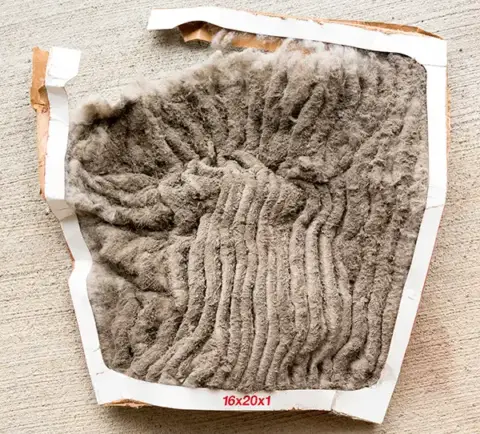You know that feeling when your AC kicks on during a scorching Texas summer day? Pure relief. But have you ever wondered what’s actually happening behind the scenes to make that cool air start flowing? Most homeowners in Greenville set their thermostat and call it a day, but understanding your HVAC system can save you serious money and headaches down the road.
Think of it this way: you wouldn’t drive a car for years without ever checking the oil. Your HVAC system deserves the same attention, especially when it’s working overtime in our Texas heat.
The Real Story Behind HVAC
HVAC sounds fancy, but it’s just heating, ventilation, and air conditioning working as a team. Each piece has a job, and when they’re all doing their part, your home stays comfortable without breaking the bank.
Your air conditioner doesn’t actually make cold air. That’s the biggest misconception we hear from customers. Instead, it’s a heat removal expert. It grabs the hot, sticky air from inside your house and kicks it outside where it belongs. The heating side works the opposite way, pulling warmth from outside air (yes, even when it’s cold) and bringing it indoors.
The ventilation part? That’s your unsung hero. It keeps air moving, filters out dust and allergens, and makes sure you’re not breathing the same stale air all day long.
Here’s what makes it all work together: your thermostat is like the brain, telling everything when to start and stop. The blower moves air through your ducts like a circulatory system. Your indoor and outdoor units are the muscle, doing the heavy lifting of temperature control.

The Magic of Moving Heat Around
This is where things get interesting. Your AC system is basically a heat-moving machine, and it’s pretty clever about how it does it.
Picture this: warm air from your living room flows over something called an evaporator coil. Inside that coil is refrigerant, a special fluid that loves absorbing heat. When the refrigerant absorbs all that heat, it transforms from a liquid into a gas, much like water turning to steam.
That heated gas then travels outside to your condenser unit (that big box sitting outside your house). A compressor squeezes the gas, making it even hotter, and then it releases all that heat into the outdoor air. As it cools down, the refrigerant turns back into a liquid and heads inside to start the cycle all over again.
This happens hundreds of times a day during summer, and honestly, it’s pretty amazing when you think about it. Your system is constantly playing this game of hot potato with the heat in your house.
Why the Science Actually Matters
We know what you’re thinking. Do you really need to understand thermodynamics to keep your house cool? Not exactly, but knowing the basics helps you spot trouble before it costs you big.
See, your HVAC system is all about balance. If something throws off that balance (like a refrigerant leak or blocked airflow), everything has to work harder. When your system works harder, your electric bill goes up, and parts wear out faster.
That’s where things like proper airflow come in. Every room in your house should get its fair share of conditioned air. If your bedroom feels like a sauna while your living room is comfortable, you’ve got an airflow problem that’s costing you money.
The refrigerant we mentioned earlier? It needs to be at precisely the proper levels and pressures to do its job efficiently. Too little, and your system can’t remove heat properly. Too much, and it’s like trying to drink through a fire hose. Everything gets overwhelmed.
Keep It Running Right (It’s Easier Than You Think)

Here’s the truth: most HVAC problems are preventable. A little attention goes a long way.
- Check your air filter: Look monthly and replace every 1-3 months depending on your household.
- Give your outdoor unit space: Keep plants and objects at least two feet away to allow proper airflow.
- Keep vents clear: Avoid blocking them with furniture or closing them off in unused rooms.
- Schedule annual maintenance: A trained technician can catch small problems before they become costly repairs.
When to Call the Professionals
Some things are definitely DIY territory. Changing filters, keeping the outdoor unit clear, and making sure vents are open. However, HVAC systems involve electricity, refrigerants, and gas lines, making it impractical to rely on online tutorials at this time.
The professional installation and service you get from your friends here at Wright’s Air isn’t just about safety. It ensures your system is sized correctly and installed to maximize efficiency and lifespan. Improper installation can cause ongoing high energy bills and shorten equipment life.
Plus, refrigerants are regulated for environmental reasons, and mishandling them can cause harm.
Cool New Tech That’s Worth Your Time
The HVAC world has gotten pretty exciting lately, and some of these new features can make a real difference in your comfort and energy bills.
- Variable speed systems: These adjust their speed based on what your house actually needs, instead of only running full blast or shutting off completely.
- Smart thermostats: The best models learn your schedule, adjust for weather, and can cut cooling costs by up to 20%.
- Zoning systems: These let you cool certain parts of your home more than others, focusing comfort where you spend the most time.
Final Thoughts
Your HVAC system is probably the hardest-working appliance in your home, especially here in Texas. Understanding how it works helps you take better care of it, spot problems early, and make smart decisions about repairs and upgrades.
Whether you need maintenance, have questions about efficiency, or are dealing with a system that just isn’t keeping up, we are here to help. At Wright’s Air, we have been keeping Greenville homes comfortable for years, and we know exactly what works in our Texas climate.
Ready to give your HVAC system the attention it deserves? Give us a call at (903) 455-5662 and let’s make sure your home stays comfortable all year long without surprise repair bills.

